What makes you feel uncomfortable on your bike and why does bike fitting revolve around your hips? We take a deep dive into modern frame geometry, existing bike fitting myths and the creation of the “Besenwagen” podcast together with Bastian Marks.
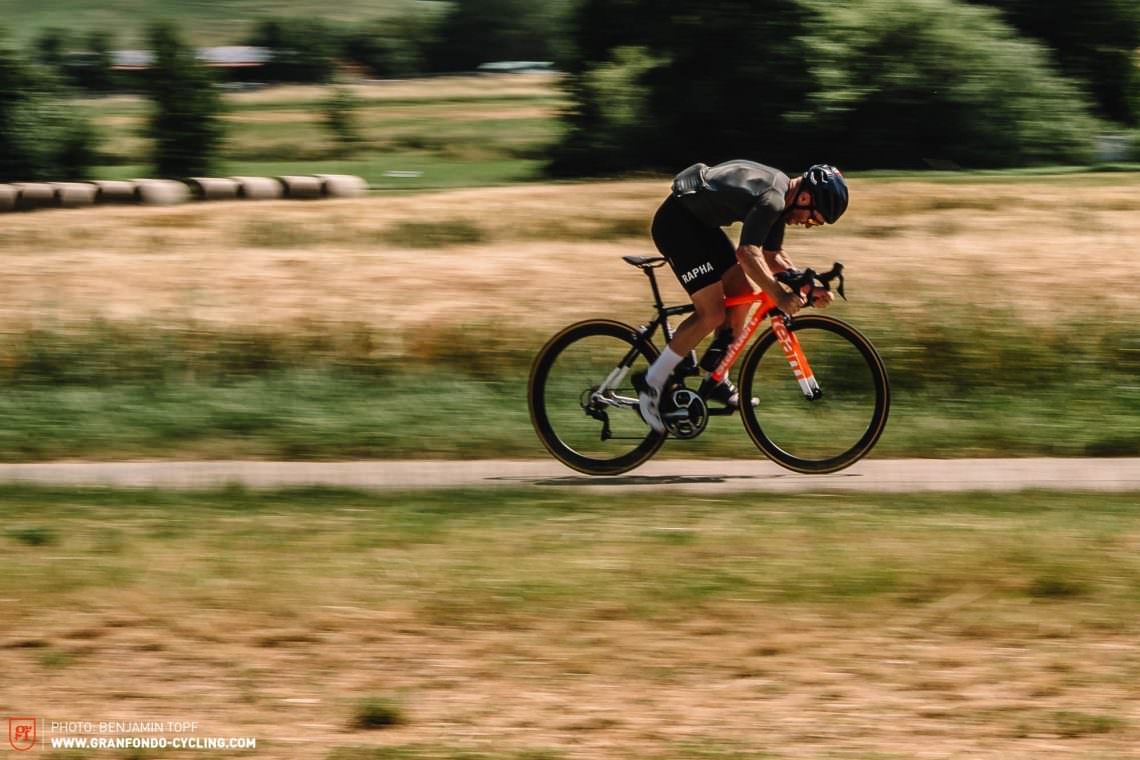
GRAN FONDO Cycling:
Bastian, thank you for being our guest today and taking the time to talk to us. Some of our readers might know you from the “Besenwagen” (broom wagon) podcast. For those who don’t, could you please introduce yourself.
Bastian:
I’m happy to be here, thank you. I got into cycling when I was 14 years old, but two or three years later, I began to notice that my position on the bike was somehow different from everyone else. It was because the bike was a size 52 and I was only 1.69 m tall. The bike simply wasn’t the right size for me, though I only found that out a couple of years later. Later on, I ended up studying physiotherapy in Holland, a very very large component of which involved anatomy and biomechanics. At the time, I was also working for the bike shop right next to the physio practice. I used to hang out there all the time and eventually the shop owner told me I might as well make myself useful. Since, as he put it, I was doing something “with bodies” anyway and they currently had demand for it, I should take care of bike fittings. So he sent me on a course to learn how it works. I went and sat through this course and thought to myself, “Somehow most of what you’re doing here is bullshit.” Not complete bullshit, but a lot of it just wasn’t quite right. So I started to think for myself.
GRAN FONDO Cycling:
And then there was this desire in you, to find answers for yourself?
Bastian:
Exactly. I wanted to understand precisely how biomechanics work on the bike. The interaction of several muscle groups and five joints at the same time. Over the years, I figured things out on my own, sitting on the bike and experimenting on myself. I soon understood that the mechanics of the hip had to be the fulcrum of it all. Everybody can press down on the pedals and push away the crank, but the thing that ultimately results in a round pedal stroke is a good hip mechanics. If you can pedal efficiently and still be able to breathe fully into your lungs in a relaxed manner, you have all the tools that will help you in the long term.
I was already working with cyclists in the physiotherapy practice and through that got to know a lot of athletes and professionals. And over the last few years, I have acquired enough knowledge that I wanted to do more with it.
GRAN FONDO Cycling:
Another revenue stream besides being a physiotherapist and broom wagon driver?
Bastian:
The response we got to the Besenwagen podcast is still quite unbelievable to all of us. The story behind it is pretty funny too. Andy Stauff is one of the most unstable and likeable people I know (laughs) and there were lots of things he wanted to do after his pro career. On one or another training ride there was talk of a podcast. I then met Dirk from Rapha in Cologne, who was looking for suitable locations for a pop-up store before the Grand Depart of the Tour de France. He told me that he would like to advertise Rapha during the tour and if I could think of anywhere cool in the German cycling world that he could place his ad. All that he could think of was Eurosport. I wrote Stauffi a message the same evening. “You once told me something about a podcast. Rapha just wanted to advertise in a podcast.” Of course, he was immediately open to the idea and so we met for lunch at a café the next day. He had a sticky note with him and the first thing he wrote down was, “Where do we want to go with this? Profit-oriented.” (Both laugh) Of course, it was total nonsense and today, we also know that the podcast won’t make us millionaires. But that’s how it started really: someone wanted to spend money and we thought,”Ok, let’s do this.”
As I said before, I’ve known many of the pros for a long time and I always got to hear a lot of their stories. I often had to laugh so hard that I cried. I found these stories incredibly interesting and at the same time, it was such a shame that nobody got to hear them. Many people don’t even know what cycling is really about and what they’re all doing in France anyway. And if you can tell a few little anecdotes from the pros, reveal how crazy they actually all are, the kinds of adventures they experience off the bike and that they’re quite nice guys, it makes it that much more fun for everyone.
Andy Stauff said, “Hey, Vossi wants to join in and he would be a good partner for this project.” So I met with him and within a week we recorded the first mini-episode.
GRAN FONDO Cycling:
And since then you’ve been driving around in the broom wagon. Do you prepare a script for each episode or are they mostly improvised conversations?
Bastian:
The three of us have so much cycling shit in our brains that we never think to plan out the next episode in detail. We have a rough outline of the topics that we would like to discuss but we don’t worry about what opinions make sense politically (laughs). It’s also important that we beguile our listeners into forgetting about political correctness (laughs).

GRAN FONDO Cycling:
You work with Standert Bikes and we see you ride one of their bikes yourself. Tell us a little more about this collaboration and what the Project Compact geometry is all about.
Bastian:
Ultimately, Project Compact is everything I’ve tried on my bike for the past 15 to 20 years to improve my riding position put into three frame geometries for smaller riders, shorter than 1.75 m. From what I know, I don’t think there is any stock geometry currently on the market that fits shorter riders so well. Sure, I’m selling it (laughs), but I also stand by it 100%. A lot of thought has gone into this geometry. Of course, it is primarily about the fit, but looks are extremely important too and the proportions have to be right.
GRAN FONDO Cycling:
It’s definitely well proportioned! What exactly makes Project Compact so unique and what sets it apart from the other solutions available on the market?
Bastian:
Standert was a very rewarding partner for this project. The smallest frame size they had when we started was really big (laughs). Company founder, Max, immediately admitted to this fact and realised that there was this part of the market that the brand hadn’t been able to cater for properly yet. “This is cool. Let’s give it a try. Let’s do it. You seem to know what you’re talking about it. At the very least, you’re small,” he said and that’s how it started. Since I had already been developing the plans in my head for years, I was able to give him the angles and lengths there and then. We sat down with a CAD program and quickly had six prototypes out on the road. The testers’ feedback was so positive that we started series production relatively quickly. Project Compact is now available for three of Standert’s models.
At the core of it all is a steeper seat tube angle compared to what you’ll normally find on the market. The moment you steepen the seat tube angle, you can shorten the chainstays while still leaving the wheelbase relatively long. I always explain it like this: we go forward with the rider’s position and tip it into the reach. This puts much more weight on the front wheel while keeping the wheelbase long enough, making the bike a lot more stable and predictable in the corners. You can make the head angle a bit steeper and the larger frame sizes have steeper head angles anyway. You only find slacker head angles on smaller frame sizes to get the handlebar closer to the rider. So, the gist of what I’m saying is this: moving the back to the front makes more sense than moving the front to the back.
As well as that, every XS frame I’ve ridden so far was too low at the front. No normal human needs a 10 cm head tube. For very skinny pro riders, it’s fine, because they have neither body fat nor organs (laughs). But we use a minimally longer head tube and an external headset cup that we include in the geometry measurements on Project Compact frames. For example, the Standert Kreissäge in size 48 has an 11 cm head tube, which together with the headset comes to a total of 12 cm. I ride a 50 frame and my head tube measures 12.5 cm in total.
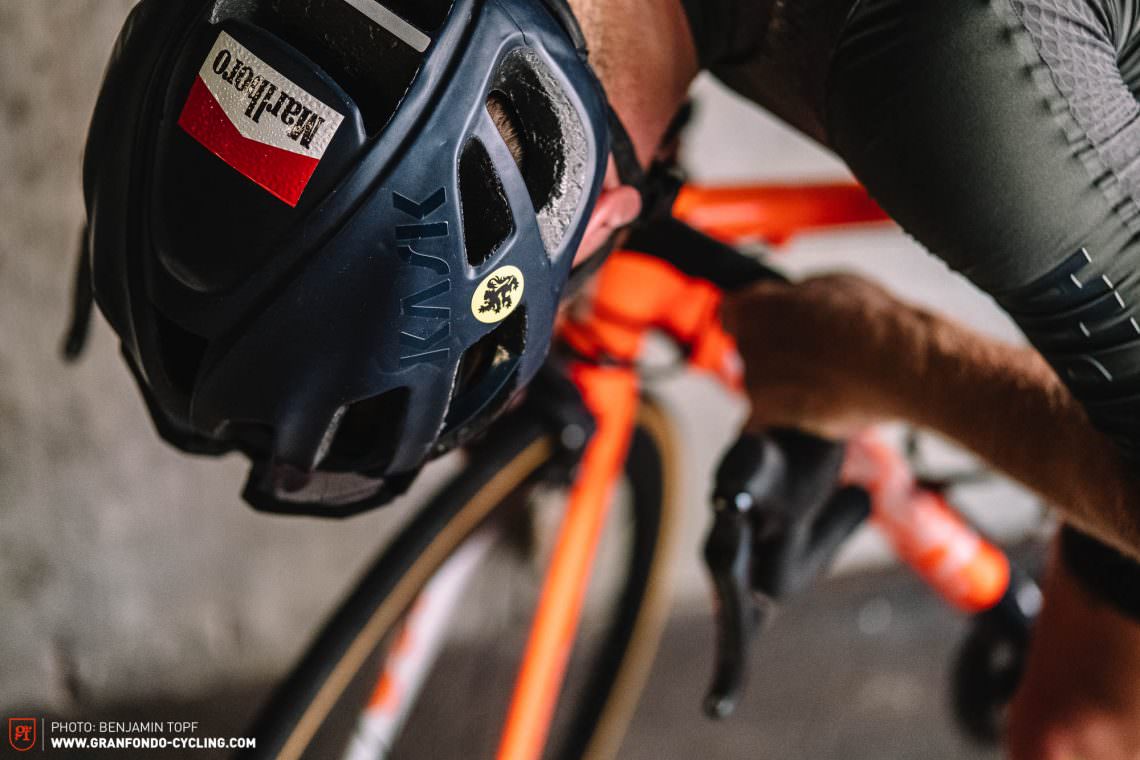

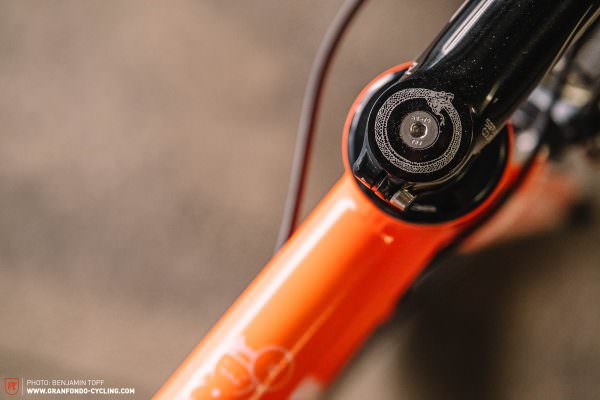
GRAN FONDO Cycling:
You say that head tubes are too short but the front of your bike is still very low. How do you ride like that, despite having organs and no professional training plan?
Bastian:
It’s only the look of it. The head tube on my bike is two and a half centimetres longer than any similar frame on the market yet the proportions are right. I’ve slammed my stem, so I ride without any spacers, but I can still reach the drops without struggling to breathe.
GRAN FONDO Cycling:
We’ve talked about the cockpit position of your optimal bike for smaller riders. What else would you recommend besides a zero-offset seatpost?
Bastian:
Buy shorter cranks! The standard 172.5 mm crank length only makes sense for a few riders and when you’re short, it makes no sense at all. My cranks are 165 mm long and this change has been the biggest boost to my riding position when I look back at the last five years. It’s relatively easy to explain crank length. Let’s say that the standard cranks on standard frame sizes on the market vary between 170 and 175 mm. That gives you a crank circumference of 34 and 35 cm. What’s the difference in percentage there? Let’s round it up to 3%.
GRAN FONDO Cycling:
I see what you’re getting at. I have an inseam length of 89.5 cm and yours must be somewhere in the upper range of 70 cm. That’s a much larger percentage difference.
Bastian:
Exactly right. I would actually have to ride a 12% shorter crank than you. With a 165 mm crank, I’m still far from twelve per cent, but I’m getting closer to your leverage. The “leverage” that everyone talks about doesn’t actually concern crank length, but the opposing movement of your legs. The smaller rider has to spread his legs much wider than the taller rider and that’s not efficient.
The absolute wattage is relevant in time trials, of course. But let’s take Chris Froome and Nairo Quintana as a case study. Nairo Quintana’s upper body is incredibly close to the top dead centre of the crank. When his leg is at the highest point with cranks that are only three per cent shorter than Chris Froome’s, his thigh almost hits his chest in the most aerodynamic position. The extensor muscles have no power in this position. He probably pushes with the other leg to help the lifted leg through this dead point, thus wasting precious watts. That’s what I mean by the opposing movement of the legs. If you’re on the leg press and you bring the weight very close to your chest, you know that it’s going to be harder to get it back up. Similarly, it’s harder to extend your leg during your pedal stroke when it’s close to your chest compared to when it’s further away. That’s because every muscle is at its most powerful when it’s extended halfway. With a 165 mm crank, I suddenly have one centimetre more space between my upper body and thigh compared to a 170 mm crank with my upper body position unchanged – this happens because the lowest crank position remains unchanged but I gain space in the highest position of the pedal. Of course, swapping the cranks during a bike fit is more effort than simply adjusting the saddle height and it can be quite expensive, but it’s definitely worth it!
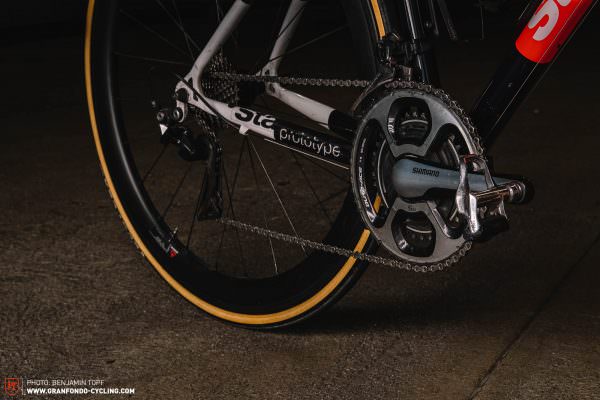

GRAN FONDO Cycling:
Some bike fitters still work with plumb lines at the knee. What would they say to such short cranks?
Bastian:
I just wanted to say something on the subject of plumb lines. They’re only relevant if you want to drop a stone from your knee onto the pedal. Otherwise, it often positions small riders badly on the bike, because your pedalling power doesn’t come from your knee. Your power vector always comes from your back, hip and leg musculature and it originates at the pelvis.
If I put shorter riders further back, as the plumb line would tell me to do, they then have to bend further forward to reach the bars and in turn, the hips tilt forward. The vector tilts like the hands on a clock, but you still need to be able to reach the pedals. To correct this you have to bring the hands of the clock, i.e. your legs back up, and the hip angle (between your legs, hips and upper body) becomes too small. What happens in the leg press model? The extension becomes quite a bit more difficult. And that’s why we have to move away from this plumb line crap. Push the saddle forward, use shorter cranks and the force vector straightens out as well as your hip angle getting bigger. The only thing that doesn’t work is that you won’t hit the pedal if you drop a stone from your knee. Honestly, plumb line? How could anyone ever ride a recumbent or use the leg press with a plumb line?
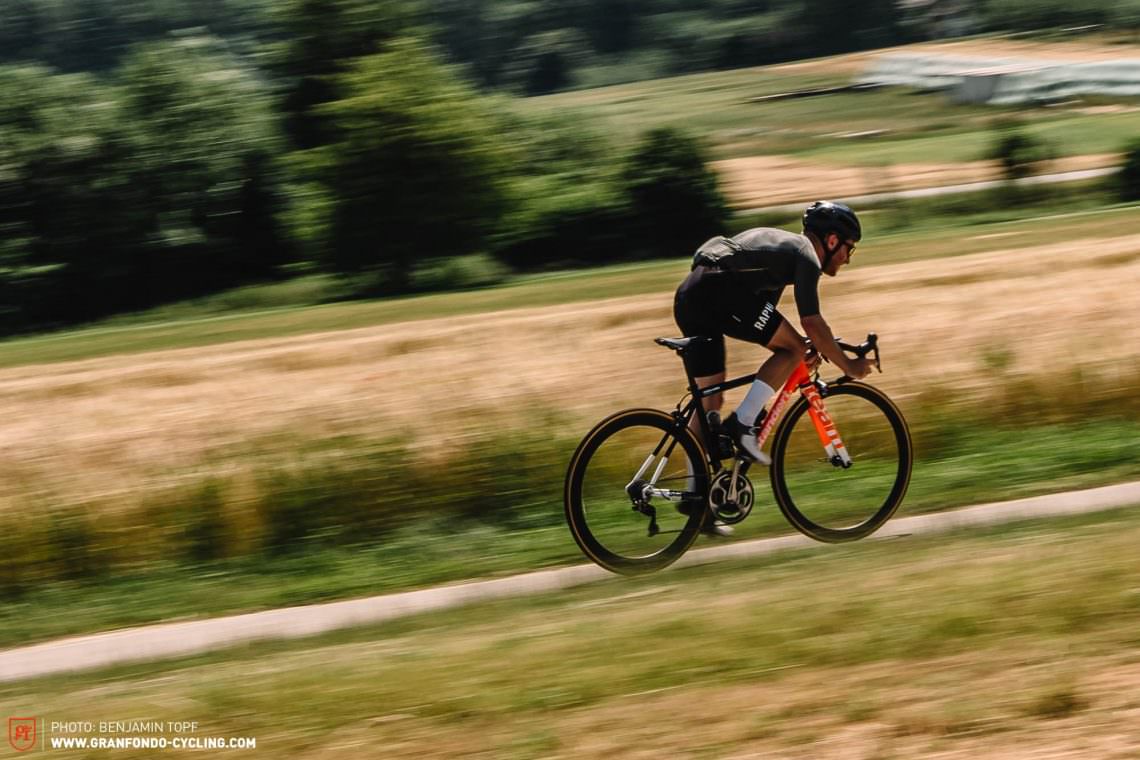
GRAN FONDO Cycling:
Ok, so now I’m thinking of buying a shorter crankset and getting my legs further away from my stomach at the top dead centre. But how does the crank length affect my wattage? Intuitively, one would think that shorter cranks equal less leverage, means fewer watts. Right?
Bastian:
Studies on this topic have found that the force that you put on the pedal at the front – that is, at the 90° position – doesn’t become less because the crank is one centimetre shorter. The wattage stays the same. You have to get used to it, but once you do you’ll be able to pedal more effectively. The muscles don’t have to get that far out of their comfort zone. And the centimetre you gain at the top dead centre increases the freedom of movement of your torso for breathing. I’m not referring so much to the more ambitious riders at this point. If you have problems with your position on the bike because you have a little belly that gets in the way, shorten the cranks. Push the saddle forward! All of this enlarges the hip angle, straightens you out and provides a more comfortable ride!
GRAN FONDO Cycling:
You see the pros pushing their saddle further forward more and more often. The further you extend the seat post, the bigger the distance between the saddle and the handlebar becomes. If you counter this with a shorter stem, the weight shifts to the back and as you just said, that isn’t ideal. How do we get out of this misery?
Bastian:
It’s the relationship between the saddle and the centre of the cranks that matters, so the biomechanics between the bottom bracket and where you sit. In the end, the distance between the saddle and the handlebars determines the angle at which your hip is positioned or at which your pelvis is positioned on the saddle. A compact riding position gives you more freedom of movement. I generally recommend zero-offset seat post for riders below 1.80 m to get that freedom of movement and get them further into the reach. If I’m only concerned with comfort when cycling, the solution is relatively simple. I always keep my hands on the tops and keep my pelvis upright that way. But most of the time we’re looking for something in between. People want to ride comfortably, but sometimes they also want to ride fast. If I ride fast, I may not always be in the drops, but at the very least, I’ll have my hands far forwards on the hoods. For this, the distance between the saddle and handlebar and the relative position of the saddle to the bottom bracket is crucial. We did a lot of testing for Project Compact and we settled on very steep seat tube angles for the geometry. They’re a bit steeper than anything currently on the market and so far we’ve only received positive feedback. I’ve ridden mine for over 15,000 km.
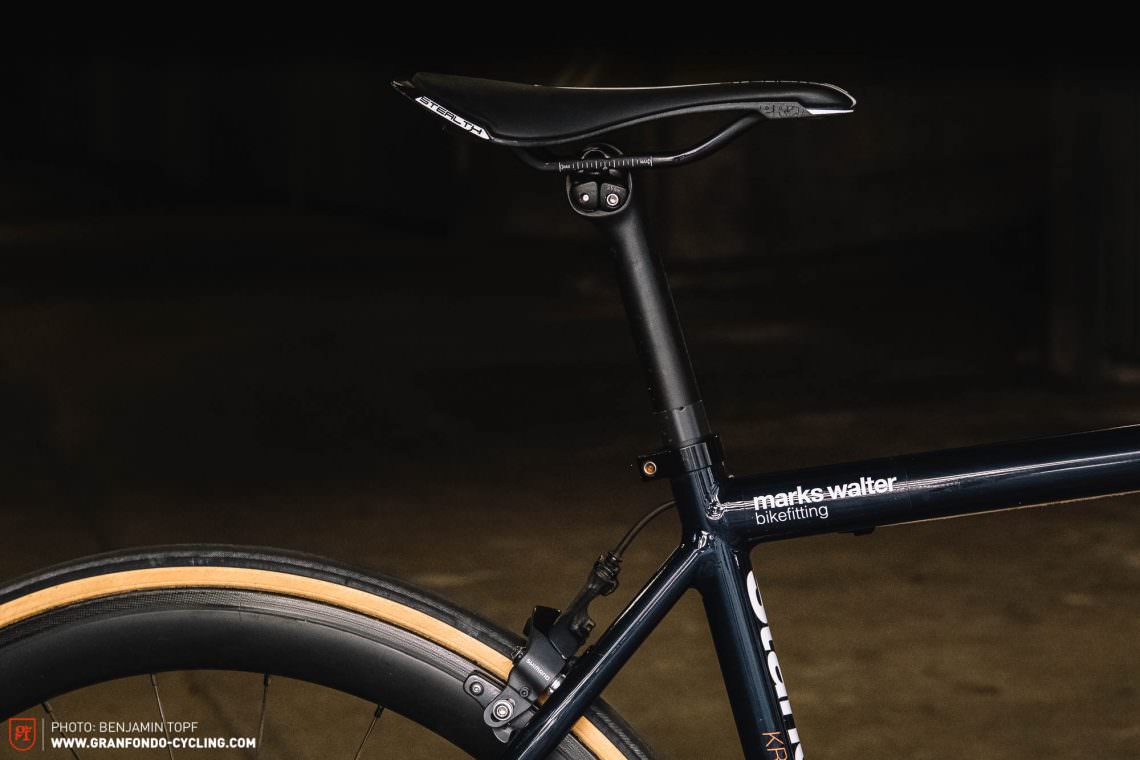
GRAN FONDO Cycling:
One thing the industry is increasingly pursuing at the moment is integration. Bicycles are understood as a unified system and are often sold with one-piece cockpits and proprietary seat posts. Many customers orientate themselves by stack and reach figures in choosing the right frame size. What do you say to that?
Bastian:
It’s important to think about, but stack and reach still don’t tell me how stretched you’ll be on the bike, because the seat tube angle is variable. With the short head tubes you usually find on small frames you often see people run a tall stack of spacers – it’s just ugly. Why not make the head tubes 2 cm longer and have much better-looking bikes. If you’re the skinny racing type, you can still put on a -17 ° stem, but the average rider shouldn’t have to sit like that.
To me, the reach is more to do with handling and definitely very important. A certain reach makes the bike ride better and more stable in the corners. However, looking at these things in isolation is a problem. For me, the reach ignores the most important fitting factor, which is the seat tube angle. So, keep these other criteria in mind when choosing a frame size. In the end, the reach doesn’t tell us anything about how you’ll be positioned on the bike or where you’ll be putting your hands on the bars. What it comes down to is the seat and head tube angles, stem length and seatpost offset. You can also move your sitting position back and forth 4 cm just by using a different saddle shape.
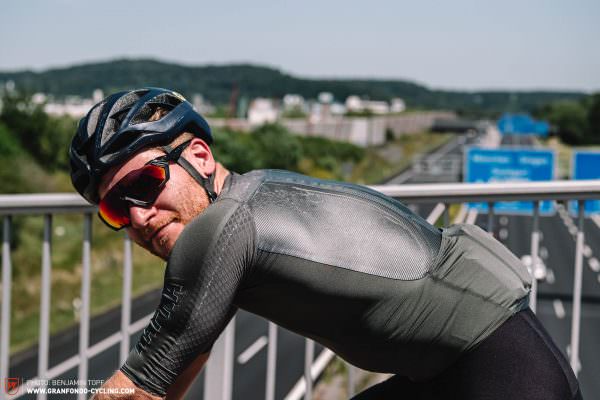
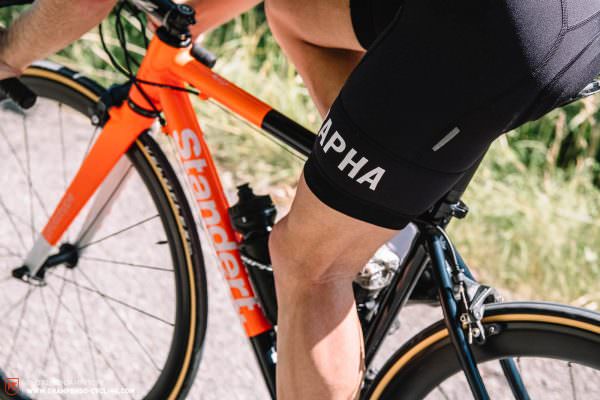
GRAN FONDO Cycling:
There are some manufacturers, such as Wilier with their Accu-Fit system, who think beyond stack and reach to see where the hoods are in the respective sizes. The problem with online shops is often the scalability of the concepts. If you’re able to cover 80% of body sizes and shapes with your range, you’re doing really well.
Bastian:
That’s true. You have these rules of thumb and they certainly are useful. You can think of it like a glove that you can buy in the right size and it fits you better than a mitten. If you want, you can have a tailor make finer adjustments. Or you can get a custom made glove from the start – but that’s where we start getting into custom frames.
What always grates me is that I get a lot of hobby cyclists as customers that have been to other bike fittings and the first thing they do is send me a PDF document of about three pages with all kinds of body measurements. Of course, they think all this information is very useful to me. Often I ask them, ”Which of these figures have you ever used in your life?” None. It’s completely senseless. Leg length and such, yeah ok. But it’s important to realise that the rider and bike system is dynamic. It’s alive. You need to know things about yourself and your body that are very unique and only you can know. Learn about yourself. Try to learn how your body works.
If you’ve been training rigorously, the cells of your muscles and tendons retain water and become shortened, making you sit 2 mm lower. When you’re feeling fresh and you’ve stretched, you might be sitting 2 mm higher up. You don’t have one single perfect riding position. Knowing this is much more useful than having measured everything down to the last millimetre and thinking you’ve got everything set up perfectly. I even say you should change your setup every three to four months to stimulate your body. Muscles get used to things and stagnate. By changing the saddle height or cleat position you can give your body a bit of stimulation, which can be good. But there are very few brave enough to give it a try (laughs).
I test and change things almost every week, which is how I’ve learnt most of what I know. The rules of thumb probably work well for 80% of riders. But anyone who falls outside the mean or has any other physical handicaps is different (laughs). Or who looks at the ankle? How do I use my ankle? A huge factor in bike fitting. I think it’s better to know and to pay attention to such things than measuring the body with a ruler or lasers. These measurements are still what customers look at. They ask me, “Are you going to take these measurements?”What about this and that? And I’m always like, “Yeah, no, I don’t need to.”
(Laughs) I’m the laser here. Nobody is symmetrical, but a lot of people still believe that doing things symmetrically is good. If I spend half the day sitting crookedly at an office desk, my one leg might sometimes just be tilted outwards a little bit. You can still pedal. But trying to straighten it with cleats or shoe inserts will give you problems with your tendons. Cycling is one of the few things in day-to-day life that is symmetrical and allows us to even out, but not if you support your imbalances by trying to fit them away.
Moving the back to the front makes more sense than moving the front to the back
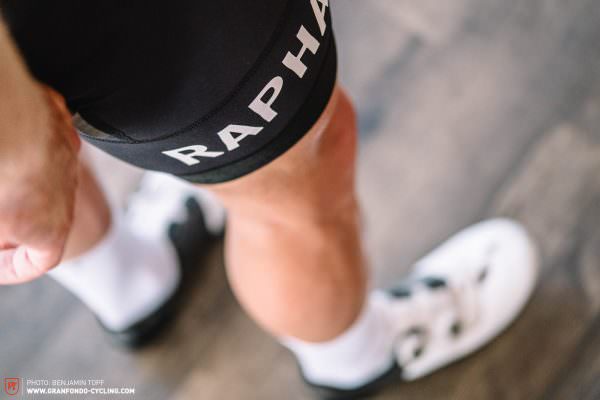
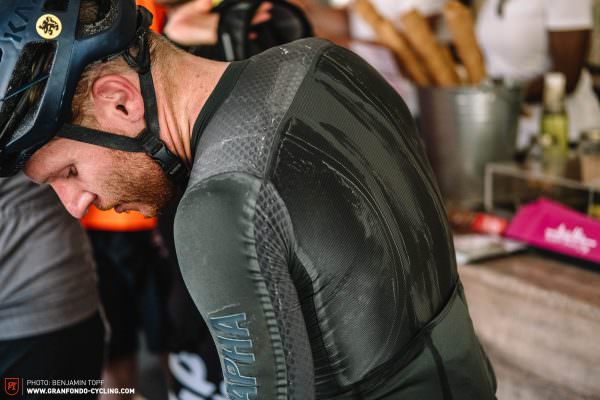
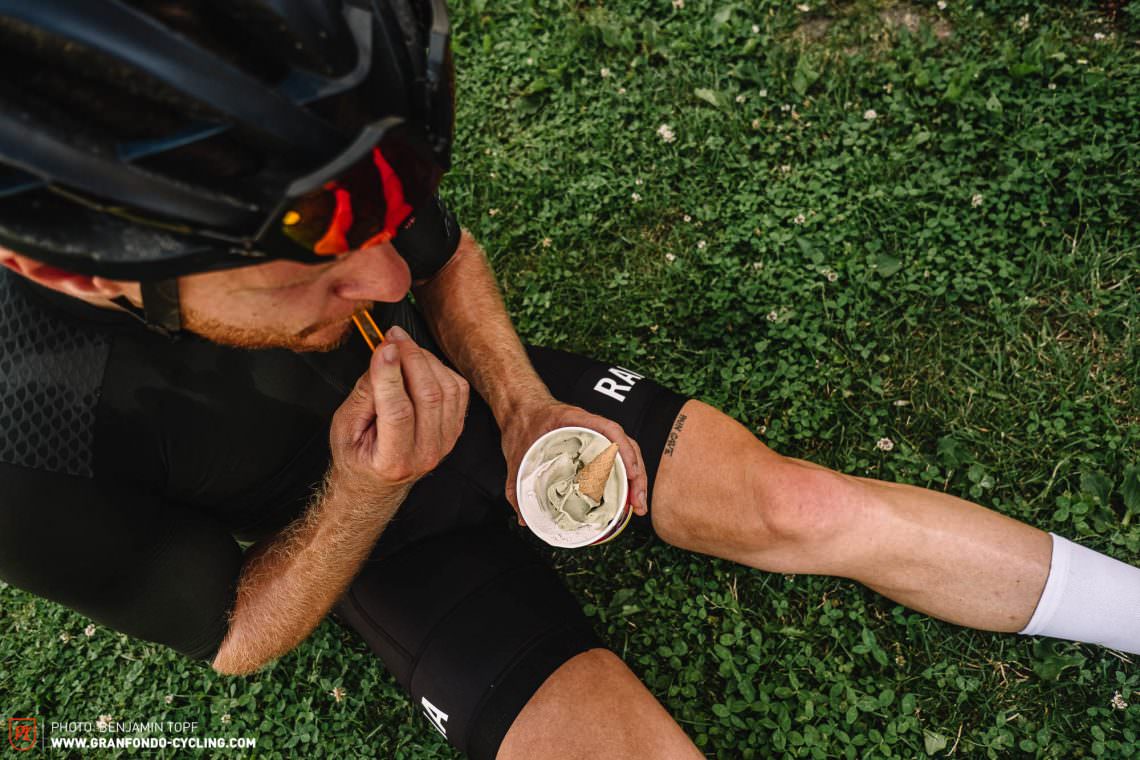
GRAN FONDO Cycling:
Which brings us back to scalability for large international companies. You can neither put the Bastian-laser in the shop nor bring it home to the living room.
Bastian:
This leads us to the core of the matter. I would rather sell my ideas to the bike manufacturers or retailers than to individual customers that come to me for a fitting. This is what I’ve started with Standert. I would prefer it if stock frames from the factory fit people better and that customers then come to me as fitter to fine-tune the details where we can. I’d rather have people listen more to their bodies and come to me with specific issues instead of a three-page PDF and a frame in the completely wrong size which they bought because it was on sale.
Getting back to the point: inseam and arm lengths aren’t useful to me. Height, strange as it sounds, tells me more than leg length. Because the leg length is the easiest thing to adjust for on the bike. Saddle height is wonderfully easy to change. The length of the frame isn’t. Many people have long legs and a short torso. This is where you run into real problems because the retailer usually asks for your leg length. In which case, they’ll recommend the larger bike. The sizes of bikes have also always been measured by the length of the seat tube. But I have to say that a lot has changed here in the last two to three years, both in terms of fitting and frame construction. Many manufacturers have started to steepen the seat tube angles on smaller frame sizes and they’re at least thinking about certain things that they haven’t thought about before and that were seemingly set in stone. And, I believe, there aren’t many fitters who still work with a plumb line from the knee. There is hope!
GRAN FONDO Cycling:
Thank you for all the exciting insights, Bastian!
Bastian:
It was an absolute pleasure! Until next time.

Did you enjoy this article? If so, we would be stoked if you decide to support us with a monthly contribution. By becoming a supporter of GRAN FONDO, you will help secure a sustainable future for high-quality cycling journalism. Click here to learn more.
Words & Photos:







